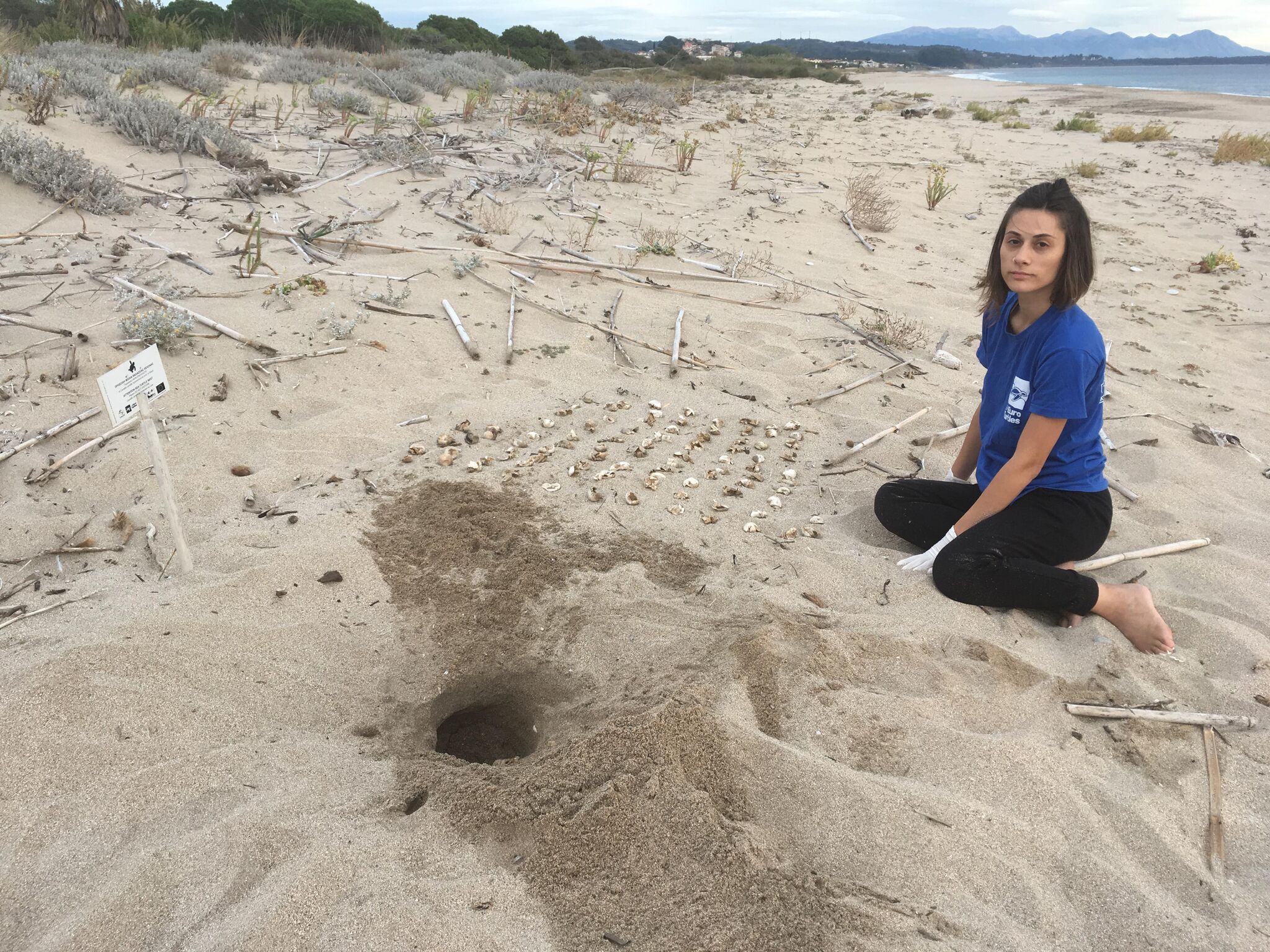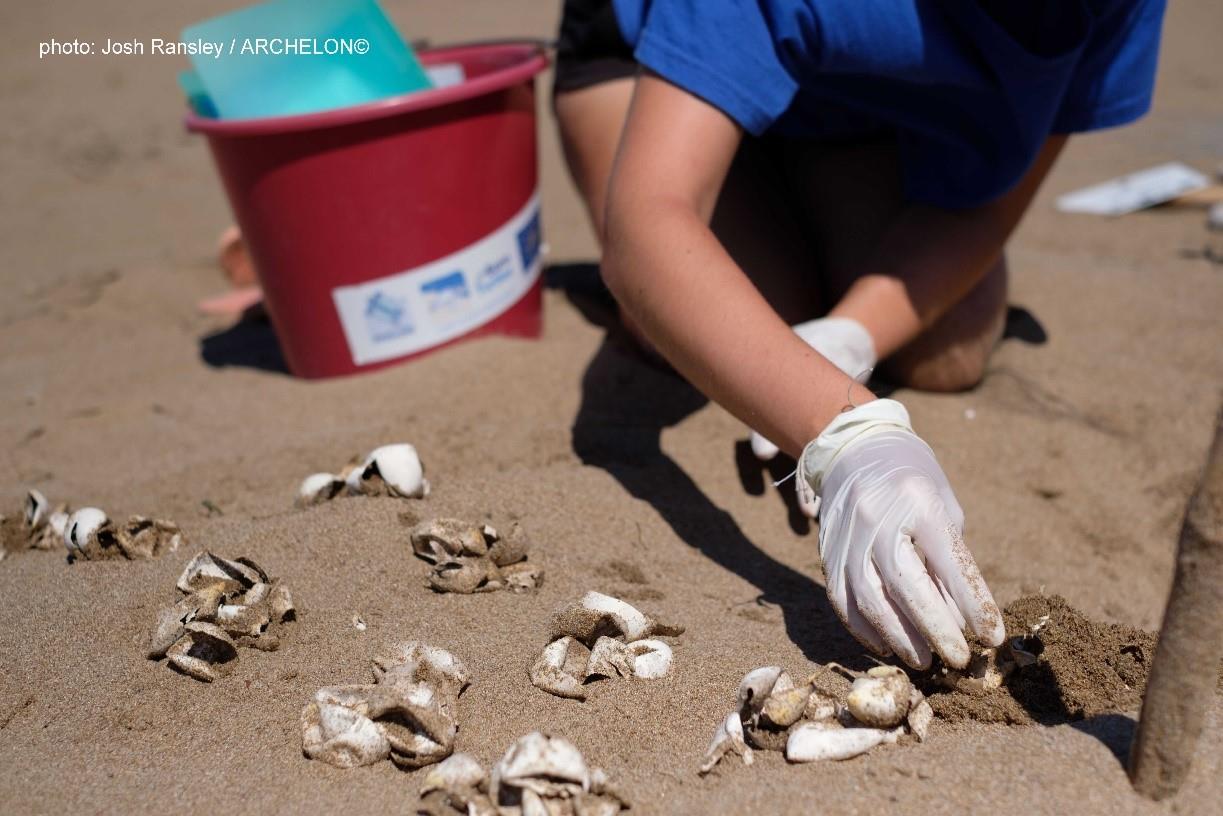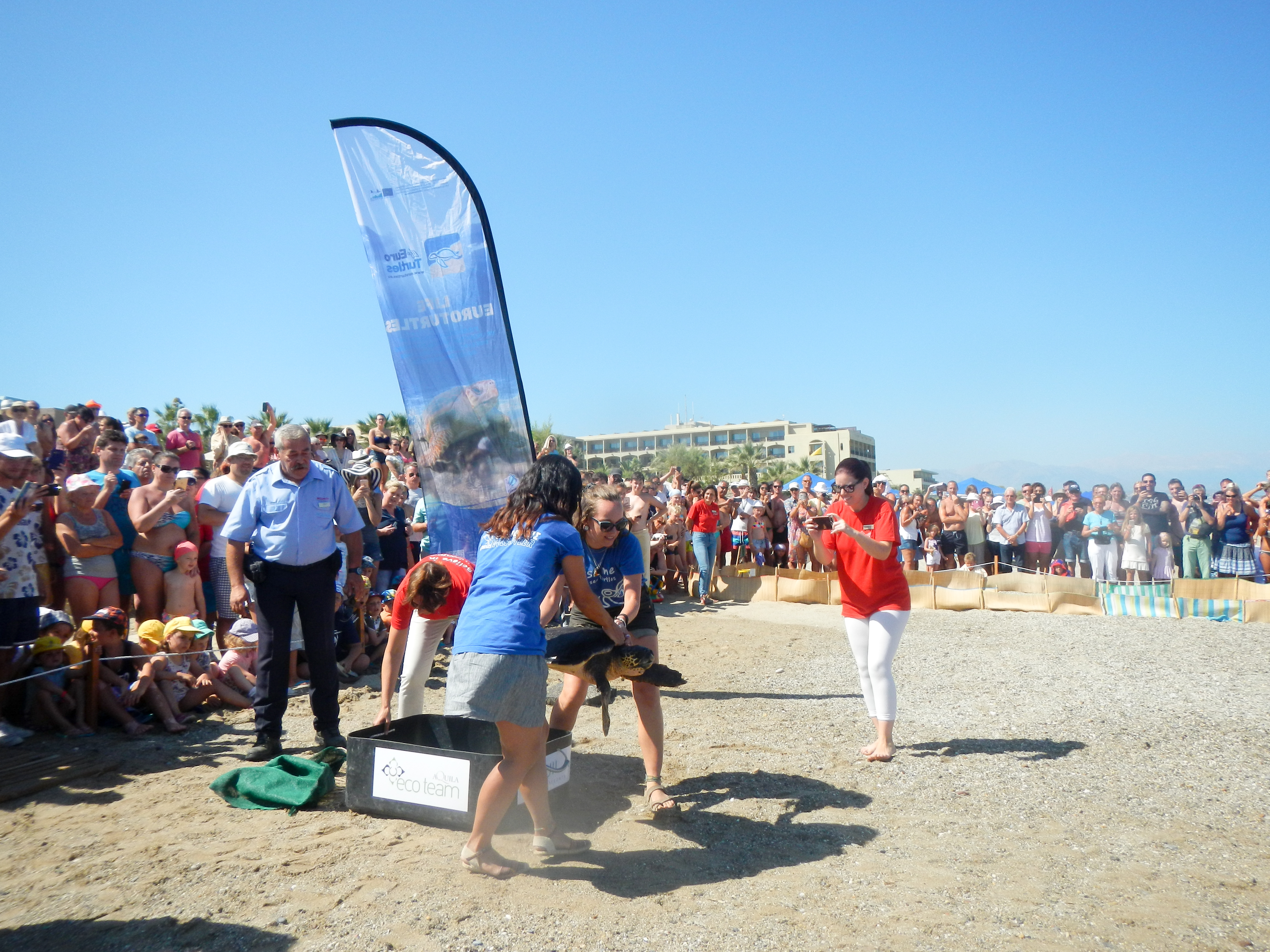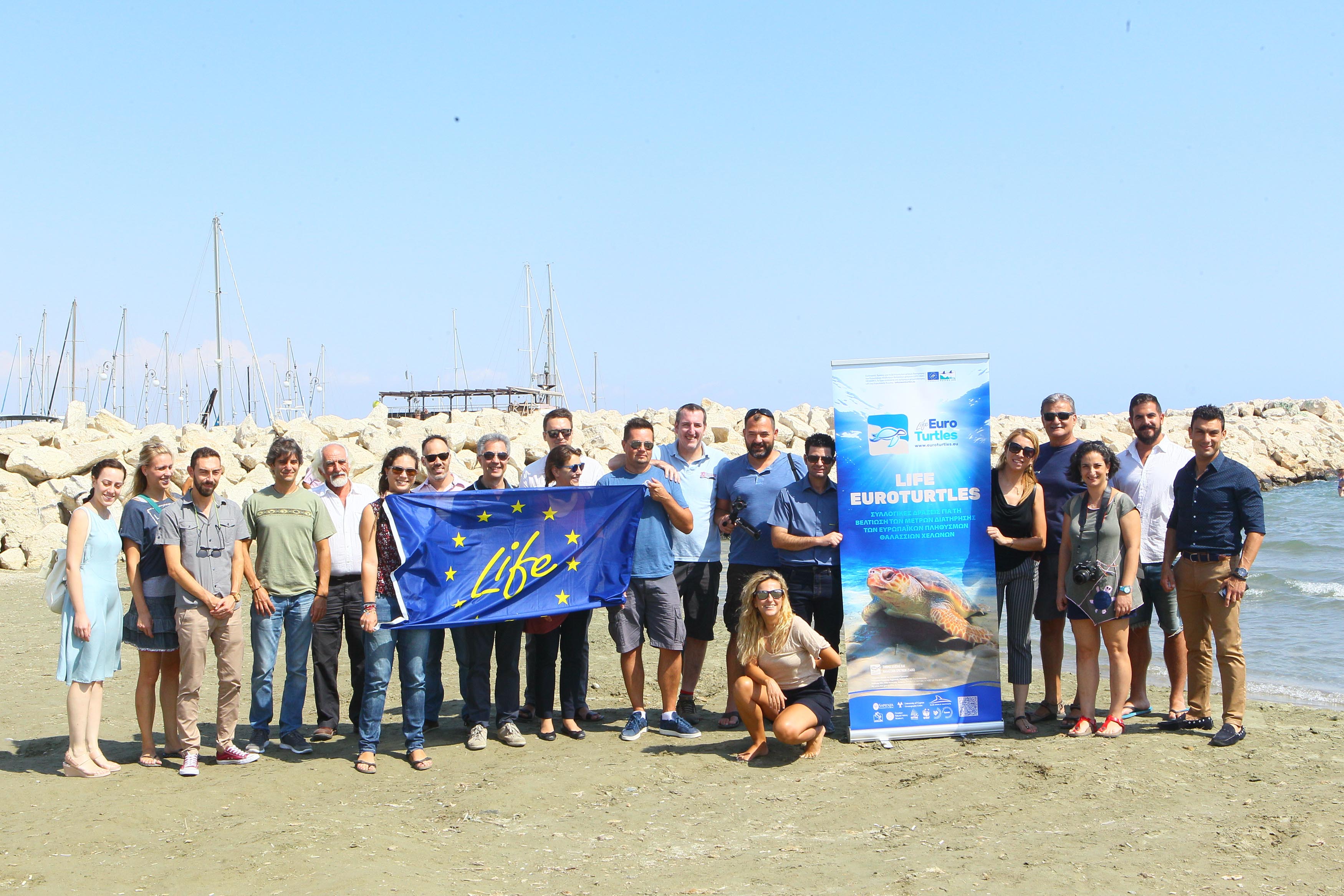May 2019 - LIFE EUROTURTLES
Α) Identity of the project
| Title/ N° |
LIFE EUROTURTLES - COLLECTIVE ACTIONS FOR IMPROVING THE CONSERVATION STATUS OF THE EU SEA TURTLE POPULATIONS |
| Duration |
01/09/2016 - 31/08/2021 |
| Budget |
Total budget: 5,116,167 € |
|
Beneficiaries |
Coordinator: Croatian Natural History Museum Partners: -ARCHELON, The Sea Turtle Protection Society of Greece |
| Location of activities |
Six countries participate in the project: Croatia, Slovenia, Italy, Cyprus, Greece and Malta. In Greece, actions are implemented at the areas of: Gulf of Kyparissia, Lakonikos Bay, the National Park of Strofylia and Kotychi Lagoons, the coast of Preveza and at ARCHELON’s Sea Turtles Rescue Centre in Glyfada, Athens as well as at several ports across the country. |
| Website | |
| Contact |
Daphne Mavrogiorgou, This email address is being protected from spambots. You need JavaScript enabled to view it. |
Description/Aim
Greece, Cyprus, Italy, Slovenia, Croatia and Malta are 6 of the most important countries for the conservation of sea turtles in the Mediterranean. This project aims to improve connections and synergism on key conservation aspects among these 6 key EU countries. ARCHELON participates as beneficiary in the implementation of the Life EUROTURTLES project, which is co funded by the European Union. ARCHELON is implementing actions such as:
- the enhancement of the operations of the Sea turtle Stranding network in collaboration with the Coastal Guard,
- the upgrading of the treatment facilities in the Sea Turtle Rescue Centre in Glyfada,
- the protection of loggerhead nests in the northern part of Kyparissia Bay, in Kotychi, in Preveza and Evrotas delta
- Innovative actions for the release of sea turtles trapped in fishing gear, in collaboration with the Hellenic Centre for Marine Research
The Green Fund of the Greek Ministry of Environment and Energy has contributed to part of ARCHELON’s own contribution in 2017 and 2018.
Β) Best Practices
Based on the projects’ results so far, actions implemented which can be considered best practices for the achievement of the project’s goals are:
- Dissemination of ‘rescue kits’ (turtle transfer tanks and first aid kits) to Port Police Authorities and Management Bodies of Protected Areas. These kits have facilitated turtle rescuing and have contributed to their prompt transfer from areas around the country to ARCHELON’s Rescue Centre (RC) in Athens
- Significant upgrade of ARCHELON’s RC with the addition of a surgery/operating room, the refurbishment of the RC’s plumbing system and the addition of extra tanks for hosting and rehabilitating more turtles
- Creation and distribution of a special tool (‘line cutter’) with the collaboration of the Hellenic Centre of Marine Research. The tool was disseminated to longline fishermen all over Greece (ports in Crete, the Ionian and the Aegean Sea) and it is intended to be used for releasing sea turtles trapped in fishing gear.
- Systematic monitoring of additional beaches, apart from ‘core’ nesting areas, resulting in the protection of 1200 extra nests the past couple of years. The project collected data on sex distribution between hatchlings and it was revealed that one of the beaches hosts mostly male hatchlings, an important finding for species conservation.
- Drone use for monitoring turtles in their marine habitat. Observations revealed information on green turtle distribution, unknown from past surveys.
Public awareness best practices include:
- A new education kit on sea turtles and their presence in the Mediterranean sea was created and will be distributed among schools the following years. So far, it has captured the interest of children and teachers in schools where it was presented.
- Workshops in fishermen's associations and port authorities, regarding the correct way of releasing and treating injured turtles caught in fishing gears. This activity particularly resonated with fishermen.
Anticipated best practices:
- Nest protection during the project in locations where it has not been carried out systematically in the past, is expected to increase the sea turtle population
- The use of drones to locate nests on the beach and monitor sea turtles at sea is expected, according to results so far, to enrich our knowledge for the species as well as reduce the ecological footprint and monitoring costs
- The training of fishermen and port authorities combined with the dissemination of necessary rescue equipment is expected, according to the results so far, to increase the number of reported injured turtles and improve their transfers to the RC for treatment
C) Results
- To date, more than 1200 additional nests have been protected in Greece in areas where protection was not systematic in the past. By the end of the project, this number is expected to reach 2,500 nests.
- Approximately 14 turtles have benefited from the upgrading of the RC and Rescue Network so far. By the end of the project, more than 35 turtles are expected to be treated at the refurbished facilities
- More than 80 fishermen have been trained on the right way to treat injured and trapped sea turtles
Information on the project can be found at the project’s website: (https://www.euroturtles.eu) and facebook page: (https://www.facebook.com/LifeEuroturtles)
A National Sea Turtle Action Plan will be drafted in cooperation with the LIFE IP 4 Natura project, and will be adopted by the State and the relevant Ministries. The Plan will include necessary actions to protect the species in Greece.






